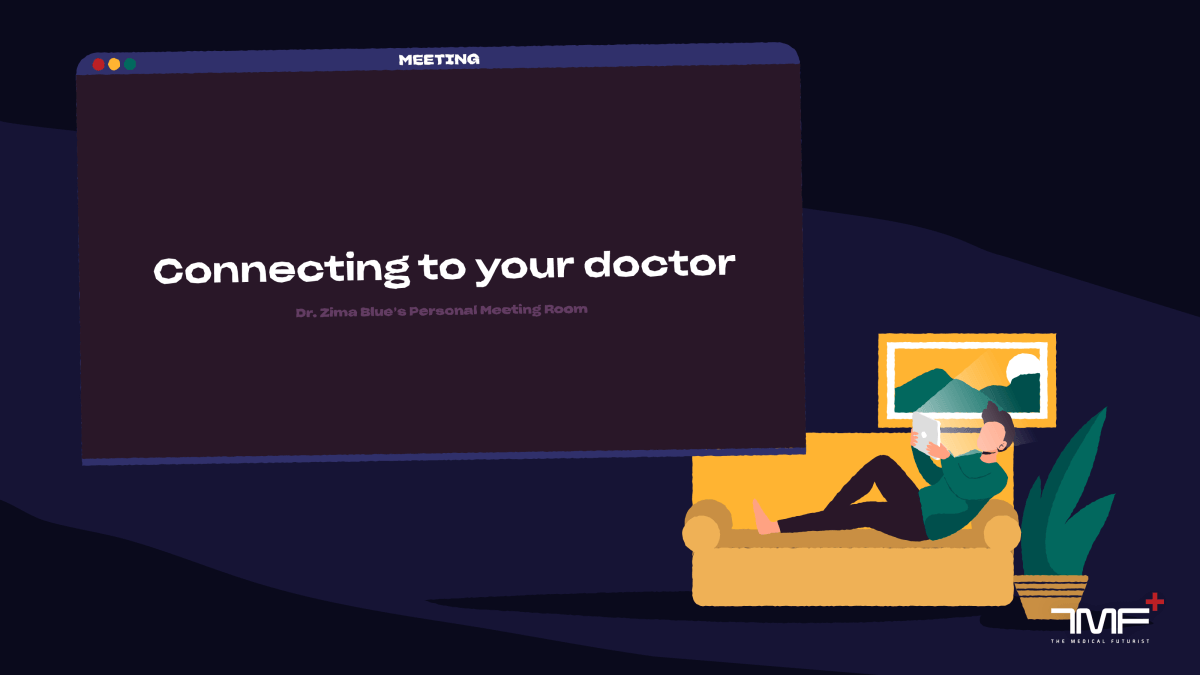Bertalan Meskó, MD, PhD
Coronavirus has shattered our world and changed nearly all aspects of our lives. It has also changed our relationship to healthcare. It is slowly becoming a cliché to say that COVID-19 has catalysed healthcare trends – but nevertheless, it’s true. Everyone in the world has seen what devastating impact healthcare can have on our daily lives and how underfunded healthcare systems depend on the heroic frontline workers, who are holding the walls from falling apart.
The windfall of the era of digital health is unquestionable, but it has always been. The hurdle was the adoption of these changes, for they posed infrastructural, operational and cultural challenges – the latter being probably the most challenging, and, probably, this was the ultimate obstacle in the change.
But the importance of good healthcare systems is now incontestable. And while the pivotal question is still the fight against the virus, leaders around the world should already look at which of these changes should remain permanent and how the entire industry can ultimately build on the learnings and the developments of 2020.
Digital health before the pandemic
In a recent article, we outlined our approach and manifesto on digital health. Since 2009, Dr Bertalan Meskó has been taking a stand for the digital health transformation. On The Medical Futurist website, we feature the latest technologies and how they can be put to use in public health. Take, for example, digital maps. Back in 2017, we wrote about data visualisations and evaluating, monitoring and even predicting health events with this technology. We also featured real-time monitoring of the Ebola epidemic. Or think of artificial intelligence in radiology diagnose and evaluation that was still utopistic a couple of years ago. We talked about science fiction-like scenarios and concepts that were hard to grasp for many. Not anymore.
Digital health during COVID-19
The pandemic has brought science fiction down to the ground. We live it, we breathe it, and to move forward we also need to embrace it, too. Upon the first news of a certain virus in China, we were quick to talk about the right use of digital health technologies – check it out here. Plenty of technologies have suddenly become widely accepted and interesting not only to medical professionals but to the general public as well. Like a hanging fruit that became ripe from one day to the other, technologies and concepts from telemedicine through A.I. monitoring to network medicine, all came together in an attempt to try to know, understand and forecast the virus.
Artificial intelligence
We can’t emphasise enough how important it was when Canadian startup BlueDot rang the bell on a small-scale outbreak in the region of the Chinese Wuhan. BlueDot used its algorithm to sift through hoards of news reports, airline data, and reports of animal disease outbreaks to detect trends – and was quick to, so to say, connect the dots. Since then, a great amount of research has been going into the possible uses of A.I. in healthcare to analyse, monitor, screen and triage COVID patients; to support hospital infrastructure in resource allocation, or further drug discovery and vaccine development. MIT even developed an A.I.-based voice analyser tool to identify asymptomatic COVID-19 patients from cough recording. And the list could go on.
Network medicine
Albert-László Barabási is one of network medicine’s pioneers. Studying biological networks to discover patterns and their behaviour is the key focus of their research. Their data visualisations have even set the artistic language of such data-driven imaging over the past 20 years worldwide. Their work became more important than ever this past April when the BarabasiLab had a list of promising drugs for testing in human cell lines in an experimental lab in less than 10 days since repurposing their network medicine toolset to find a treatment for COVID-19.
Remote care, a.k.a. telemedicine
Telemedicine has been available for quite a while now, but its breakthrough was undoubtedly due to 2020. From being a far-fetched concept for the care of remote areas, the dire need to protect medical professionals and other patients from the virus made remote technologies skyrocket. Due to the coronavirus, medical visits online and over the phone experienced a never-before-seen surge. From mental health care to emailing prescriptions or school medical certificates for kids – we had known these could exist. But we never expected they could so easily be adopted into our everyday.
At-home lab tests
After remote care, remote testing was next to be a major disruptor. Waiting in lines for your sample to be taken is out of the question. Today, one can have multiple important tests without even leaving the house. The red tape that prevented at-home testing in the past as good as disappeared with COVID. Certain lab tests are much safer at home as these help avoid exposure to the infection.
The pandemic brought light to a trend we discussed before. To reduce the exposure to risks such as an infection, at-home lab tests are coming.
Smartphones, robots, 3D printing and more
Disinfectant robots and drones appeared to reduce the risk for humans. We can all leverage the real power of smartphones with online consultations, mental health care, at-home drug delivery, or even COVID-19 testing; while appreciating the fast-paced printing in 3D to create medical tools, protectors and practically anything else needed when traditional production or supply is scarce and when health institutions are overwhelmed.
Data protection
This is very uncomfortable. Not just for you – for all of us. Data protection is like when someone farts on a fancy party: everyone knows it’s there. But no one wants anything to do with it. On one hand, we all know sharing data is essential for tracking the virus’ spread. On the other, so many security flaws (and in many countries, probably built-in features) can get you exposed.
We already wrote about the dark side of health trackers: dubious tracking from smartphones and wearables by amoral third parties. Today, we need to understand that there is no digital health without sacrificing a part of our privacy. The advanced technologies cannot improve without our data; without it, they can’t be implemented as part of regular medical care. And COVID-19 has only made things worse.
The post-pandemic era in digital health: what’s next?
No matter how many mistakes are made, we need to think a lot about what is coming. Because the question is not whether we have to live with the pandemic but for how long. You yourself need to become a bit of a forecaster yourself (don’t worry we can guide you on your way).
This will make it easier for everyone to prepare for what is still to come. By drawing scenarios on what might come, you will be better prepared in your professional as well as in your personal life. And don’t worry to be wrong. Just bear in mind what Yoda said: “The greatest teacher, failure is.”
The outtakes:
1. The pandemic has facilitated the adoption of many digital health technologies forsooth.
2. The question is not whether to use them, but how to use these technologies.
3. Instead of persuading people about the technologies, we have to focus on using the technologies in practice.






